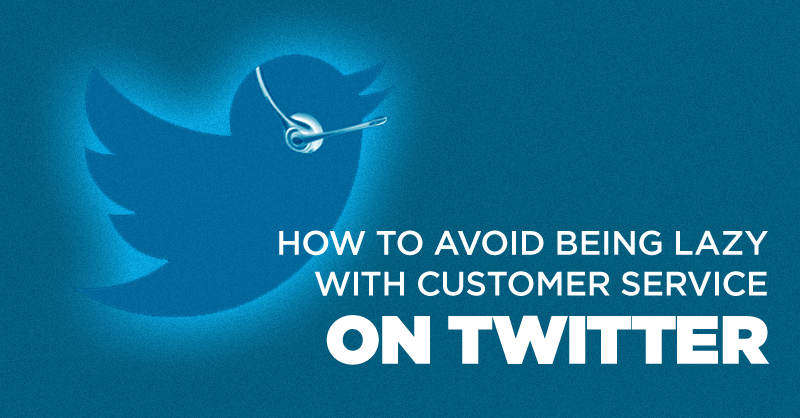
Unfortunately, we’ve all experienced a moment of bad customer service that left us really angry. Whether you’ve been stuck on the phone for an hour with a customer service rep or can’t get ahold of anyone at an organization, the feeling is always the same. Helplessness.
Twitter is often regarded as one of the main social networks for handling customer service issues for businesses. However, many of the businesses using Twitter to deal with customer service concerns today are still doing it all wrong.
Why is important to properly handle customer service concerns on Twitter?
According to Client Heartbeat, a dissatisfied customer will tell between 9-15 people about their experience. If a dissatisfied customer complains on Twitter or elsewhere on social media, it gives them the opportunity to reach more people with the story of their bad experience with a company.
Bad customer experiences are bound to happen even with the best companies, but what’s most important is how these issues are handled by the organization.
Many organizations claim to use Twitter for customer service purposes, but they aren’t taking full advantage of the social network and in a sense, are being lazy with their outreach to aggravated customers. Is this an attempt to make their company look like they are trying to be helpful or is it just pure ignorance? It’s likely a combination of both.
What does a lazy customer service tweet look like?
Example #1 from @JawboneSupport:

Example #2 from @AEO:

Example #3 from @DunkinDonuts:

These customer service tweets above are lazy because these businesses don’t immediately try to help customers reaching out to them, but instead give their customers an alternate way of reaching their customer service team. None of these people asked for the phone number of these business’s customer service lines, they asked for help.
After these customers reached out to these companies on Twitter for help, they were confronted with another roadblock before they are even able to discuss their issue. Did tweeting provide these customers any true value? Not really. If your customer is talking with you and needs help on Twitter, try to actually help solve their problem on Twitter where your customer is active in private.
What each of these companies could have done is ask their customers to follow their account so they could communicate further through direct messaging on Twitter to try and resolve the issue. This cuts out a step and allows one-to-one communication between a business and a customer with an issue they are trying to resolve in privacy.
Even if the company needs to have this customer service communication through email, the least they could do is DM a customer and ask for the customer’s email. Then it’s up to the company to follow-up with their customer via email to help solve the problem and take the next steps in how this conversation will be facilitated.
This is better way of handling customer service since it’s up to the COMPANY to help fix the problem a person is having, not the CUSTOMER. It’s all about continuing the conversation on the channel in which it first occurred to streamline the process for a customer, but also taking the conversation to a private place on the network. Using direct messaging or DM is a way for your organization to make full use of the Twitter platform and its various features to help your customer base in private.
What does the correct approach to customer service look like on Twitter?
Example #1 from @RadioShack:

Example #2 from @BlackBerryHelp:

Example #3 from @DairyQueen:

The above examples illustrate tweets from organizations that understand how to interact with their customers on Twitter effectively. In examples #1 and #3, the businesses reach out to their customers on Twitter before they even have a question, issue or comment. This helps these businesses ensure that their customer base on Twitter is enjoying their experience with the company.
When there is a need for a customer service discussion, these brands try to help solve any issues by using DM on Twitter and not sending their customers elsewhere to a phone number or a form.
Paying attention to these small differences in the behaviors of other businesses can help your organization stand out and offer a truly memorable customer service experience that is quick and easy for your customer base. It’s all about providing value and assistance where your customers are active online, not where it’s most convenient for your organization.
What customer service experiences have you had on Twitter and were they positive or negative? Do you find companies receptive to using Twitter to communicate with you? Share your experiences below.
This article was originally published on LinkedIn.


